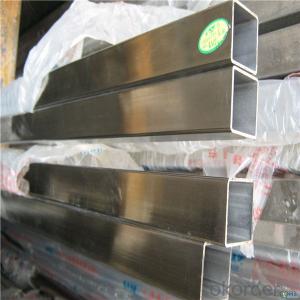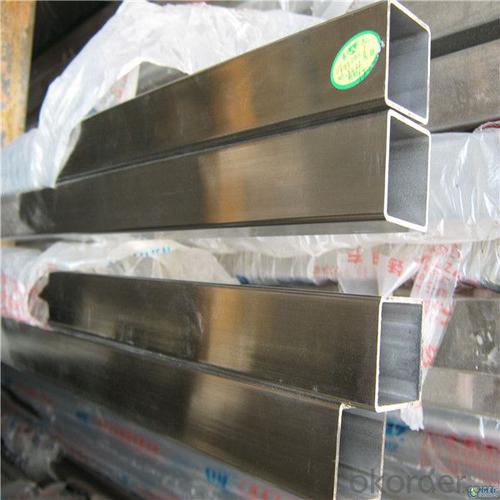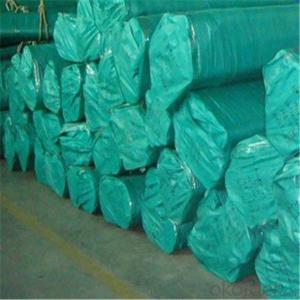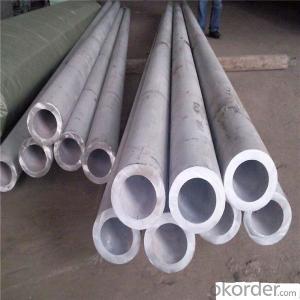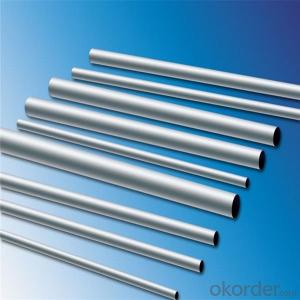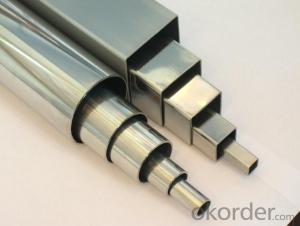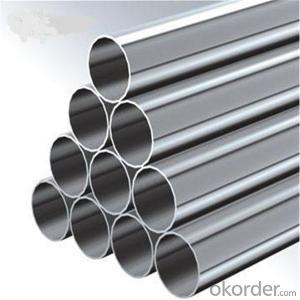Sch40 Stainless Steel Pipe TP304 316 316L in Wuxi ,China
- Loading Port:
- Shanghai
- Payment Terms:
- TT OR LC
- Min Order Qty:
- 2 m.t.
- Supply Capability:
- 25000 m.t./month
OKorder Service Pledge
OKorder Financial Service
You Might Also Like
Specification
316 stainless steel pipe
Product Description
Item | Sch40 stainless steel pipe TP304 316 316L |
Standard | ASTMA312,A213,A376,A789,A790,A376,A249, EN10217-7-2005,GB14976-2002,GB13296-2009, JIS G3459-2004,JIS3463-2006 |
Technique | cold rolled,hot rolled ,cold drawn |
Outside diameter | DN10-DN1200,3/8"-100",6-2500mm |
Wall thickness | SCH5-SCH160,XS,STD,XXS,0.5-150mm |
Length | 5.8m,6m,11.8m,12m,or as required |
Surface | Annealing,picking,polished,bright,hair line,brush,sand blast,stain finish,etc |
Price term | Ex-Work,FOB,CNF,CFR,CIF,FCA,DDP,DDU.etc |
Payment term | TT,L/C,western Union |
Export to | Ireland,Singapore,Indonesia,Ukraine,Saudi Arabia,Spain,Canada,USA,Brazil,Thailand, Malaysia,Chile,Korea,Iran,India,Egypt,Malaysia, Viet Nam,Oman,Dubai,Holland, Mexico,Peru,Italy,Russia,Nigeria,etc |
Package | Standard export package,suit for all kinds of transport, or as required |
Container Size | 20ft GP:5898mm(Length)x2352mm(Width)x2393mm(High),20-25 Metric ton 40ft GP:12032mm(Length)x2352mm(Width)x2393mm(High),20-25 Metric ton 40ft HC:12032mm(Length)x2352mm(Width)x2698mm(High),20-25 Metric ton |
Application | widely used in petroleum, foodstuff, chemical industry, construction,electric power, nuclear energy,biotechnology, machinery, paper making,shipbuilding,boiler fields etc |
Contact | If you have any question,please feel free to contact me . We are sure your inquiry or requirements will get prompt attention. |
Definition of stainless steel(Adopted form Wikipedia)
In metallurgy, stainless steel, also known as inox steel or inox from French "inoxydable",
is defined as a steelalloy with a minimum of 10.5% to 11% chromium content by mass.
Stainless steel does not readily corrode, rust or stain with water as ordinary steel does,
but despite the name it is not fully stain-proof, most notably under low oxygen, high salinity,
or poor circulation environments. It is also called corrosion-resistant steel or CRES
when the alloy type and grade are not detailed, particularly in the aviation industry.
There are different grades and surface finishes of stainless steel to suit the environment
the alloy must endure. Stainless steel is used where both the properties of steel
and resistance to corrosion are required.
Surface Finish :
Surface finish | Characteristics and application |
No.2B | The surface brightness and flatness of no2B is better than no2D. then through a special surface treatment to improve its mechanical properties, No2B could nearly satisfy comprehensive uses. |
No.3 | Polished with abrasive belt of git#100-#200, have better brightness with discontinuous coarse stria, used as inner and external ornaments for building, electrical appliances and kitchen utensils etc. |
No.4 | Polished with abrasive belt of grit #150-#180,have better brightness with discontinuous coarse stria, but thinner than No3, are used as bathtub buildings inner and external ornaments electrical appliances kitchen utensils and food processing equipment etc. |
HL | Polished with abrasive belt of grit #150-#320 on the NO.4 finish and has continuous streaks, mainly used as buildings ornaments elevators, door of building, frontal plate etc. |
BA | Cold rolled, bright annealed and skin-passed, the product have excellent brightness and good reflexivity like mirror, kitchen apparatus, ornament etc. |
8K | The product have excellent brightness and prefer reflexivity can to be the mirror. |
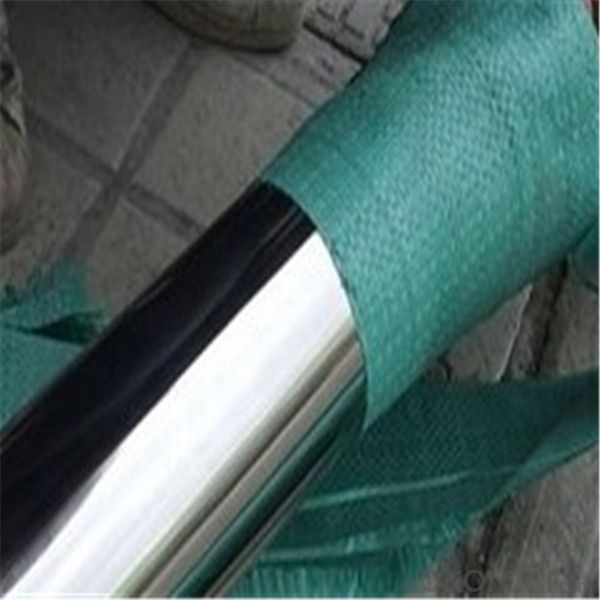

- Q: Are stainless steel pipes resistant to scaling and pitting?
- Yes, stainless steel pipes are highly resistant to scaling and pitting due to their inherent corrosion-resistant properties.
- Q: How do you calculate the pressure rating of stainless steel pipes?
- To calculate the pressure rating of stainless steel pipes, you need to consider several factors. First, you need to know the material properties of the stainless steel being used, such as its yield strength and tensile strength. These properties can be obtained from material data sheets or by conducting mechanical tests. Next, you need to determine the wall thickness of the stainless steel pipe. This can be measured directly or obtained from the pipe manufacturer's specifications. It is important to ensure that the wall thickness is uniform along the entire length of the pipe. Once you have the material properties and the wall thickness, you can use the appropriate formula or calculation method to determine the pressure rating. There are various codes and standards available that provide guidance on calculating pressure ratings for different types of pipes, such as the ASME B31.3 code for process piping or the ASME B31.1 code for power piping. These codes typically consider factors such as the allowable stress of the material, safety factors, and design considerations. The formulas or calculation methods provided in these codes take into account the material properties, wall thickness, pipe diameter, and other relevant parameters to calculate the maximum allowable pressure that the stainless steel pipe can withstand. It is important to note that the pressure rating of stainless steel pipes may also depend on other factors, such as the temperature of the fluid being transported, the corrosive nature of the fluid, and any potential external loads or stresses on the pipe. Therefore, it is recommended to consult the applicable codes, standards, or a qualified engineer to ensure accurate calculations and to consider all relevant factors when determining the pressure rating of stainless steel pipes.
- Q: What factory uses industrial stainless steel tube to be more?
- The automotive industry also has a lot of demand for stainless steel pipes. The main use of stainless steel is the exhaust system, which accounts for more than 1/2 of the total amount of stainless steel in the automobile, and 80% of the ferritic stainless steel. The exhaust gas from the automobile engine flows through the exhaust manifold, front pipe, hose, converter, and central pipe and finally flows out of the muffler. Commonly used in the exhaust system are 409L, 436L and so on. Automobile muffler mainly uses stainless steel pipe. According to estimates, the use of stainless steel pipes in the car accounted for the entire downstream of the stainless steel pipe about 1.5% of the amount, while the use of stainless steel seamless tubes and welded pipe ratio of about 2:1.
- Q: What are the different surface finishes available for stainless steel pipes?
- There are several different surface finishes available for stainless steel pipes, each with its own unique characteristics and uses. 1. Mill Finish: This is the basic finish that stainless steel pipes come with after manufacturing. It has a dull, rough appearance and is suitable for applications where aesthetics are not a major concern. 2. Brushed Finish: Also known as satin finish, this surface finish is achieved by brushing the stainless steel pipe with abrasive material. It creates a smooth, brushed appearance with fine lines running in one direction. Brushed finish is commonly used in architectural applications and can provide a more polished look compared to the mill finish. 3. Mirror Finish: This is the most reflective surface finish available for stainless steel pipes. It is achieved by polishing the surface to a high gloss using progressively finer abrasives. Mirror finish is commonly used in decorative applications and provides a sleek, reflective appearance. 4. Polished Finish: This finish falls between the brushed and mirror finishes. It is achieved by polishing the surface to a smooth, shiny appearance using finer abrasives than the brushed finish. Polished finish is often used in applications where a more refined, but not overly reflective, look is desired. 5. Bead Blasted Finish: This finish is achieved by blasting small glass beads against the surface of the stainless steel pipe, creating a uniform matte appearance. Bead blasted finish is commonly used in industrial applications where a non-reflective surface is required, such as in food processing or pharmaceutical industries. 6. Electropolished Finish: This is a specialized surface finish that involves electrochemical polishing of the stainless steel pipe. It removes surface imperfections, enhances corrosion resistance, and creates a smooth, bright appearance. Electropolished finish is commonly used in industries that require high sanitary standards, such as pharmaceutical and biotechnology. These are just a few of the different surface finishes available for stainless steel pipes. The choice of finish depends on the specific application requirements, such as aesthetics, corrosion resistance, and cleanliness.
- Q: What are the different types of stainless steel pipe connections?
- Various applications commonly utilize different types of stainless steel pipe connections. Some of the most frequently used types are as follows: 1. Threaded Connections: These connections involve joining two pipes with matching threads by screwing them together. They are typically employed for smaller pipe sizes and applications with low pressure. 2. Socket Weld Connections: In this type of connection, the pipe is inserted into a socket and then welded around the joint. Socket weld connections are primarily used for smaller pipe sizes and applications with high pressure. 3. Butt Weld Connections: Butt weld connections entail welding the ends of two pipes together. They are commonly employed for larger pipe sizes and applications with high pressure. 4. Flanged Connections: Flanged connections involve connecting two pipes by attaching a flange to each end. The flanges are then secured by bolts to create a strong joint. Flanged connections are frequently used for larger pipe sizes and applications that require easy disassembly. 5. Compression Connections: Compression connections utilize a compression fitting to connect two pipes. This type of connection is particularly useful for applications that require frequent disassembly and reassembly. 6. Grooved Connections: Grooved connections involve using grooved fittings to connect two pipes. The grooves on the fittings align with grooves on the pipes, and a gasket is inserted to create a seal. Grooved connections are commonly utilized in fire protection systems and industrial piping. Each type of stainless steel pipe connection offers its own advantages and disadvantages. The selection of the appropriate connection type depends on the specific requirements of the application, taking into account factors such as pressure, temperature, pipe size, and ease of installation.
- Q: What is the difference between seamless and electric resistance welded stainless steel pipes?
- Seamless and electric resistance welded (ERW) stainless steel pipes vary in terms of their production process and the characteristics of the resulting pipes. Seamless stainless steel pipes are made through hot rolling or cold drawing. A solid cylindrical billet or ingot is heated and pierced to create a hollow tube. This tube is then elongated and reduced in diameter to achieve the desired size and thickness. Since seamless pipes lack any welding seam, they possess higher strength, corrosion resistance, and pressure resistance compared to welded pipes. They are commonly used in high-pressure applications due to their ability to withstand stress and resist leaks or failures. In contrast, electric resistance welded stainless steel pipes are manufactured by applying heat and pressure to longitudinally welded stainless steel strips or plates. The edges of the strip or plate are heated and fused together under pressure to form a tube. ERW pipes have a visible welded seam along their length due to the welding process. Although the welded seam may slightly diminish the overall strength and corrosion resistance of the pipe, ERW pipes are still highly durable and suitable for various applications. They are frequently utilized in industries such as oil and gas, petrochemical, and plumbing. To summarize, the primary distinction between seamless and electric resistance welded stainless steel pipes lies in their manufacturing process and the presence of a visible welded seam. Seamless pipes are produced without welding, resulting in superior strength and corrosion resistance, particularly in high-pressure applications. Conversely, ERW pipes are formed through welding, resulting in a visible seam, but they still possess good durability and are widely used in different industries.
- Q: Can stainless steel pipes be insulated with polyphenylene sulfide?
- Stainless steel pipes, indeed, have the capability to be insulated using polyphenylene sulfide (PPS). PPS, a thermoplastic with remarkable properties of thermal and chemical resistance, can be employed as an insulator in a multitude of applications, such as pipes and tubing. By applying PPS as insulation to stainless steel pipes, the transfer of heat can be minimized and condensation can be effectively prevented. Moreover, PPS exhibits resistance to various chemicals, rendering it apt for utilization in environments prone to corrosion.
- Q: Can stainless steel pipes be used for pharmaceutical storage tanks?
- Pharmaceutical storage tanks can utilize stainless steel pipes. The pharmaceutical industry highly favors stainless steel due to its exceptional resistance to corrosion, long-lasting nature, and ability to uphold cleanliness. Its non-reactive properties are advantageous in preventing contamination of stored pharmaceutical products. Furthermore, stainless steel pipes possess a smooth surface that is easy to clean, making them ideal for maintaining the necessary hygiene standards in pharmaceutical storage. Additionally, stainless steel can endure extreme temperatures and withstand the demanding cleaning procedures commonly employed in pharmaceutical facilities. Consequently, stainless steel pipes are widely employed in constructing pharmaceutical storage tanks to guarantee the safety and preservation of the stored pharmaceutical products.
- Q: Can stainless steel pipes be used in the food processing industry?
- Yes, stainless steel pipes are commonly used in the food processing industry due to their corrosion resistance, hygienic properties, and durability. Stainless steel is non-reactive, does not leach chemicals into food, and can withstand high temperatures and frequent cleaning, making it an ideal material for transporting food and beverages safely.
- Q: What are the different grades of stainless steel used for pipes?
- The different grades of stainless steel used for pipes include 304, 316, 321, and 347.
Send your message to us
Sch40 Stainless Steel Pipe TP304 316 316L in Wuxi ,China
- Loading Port:
- Shanghai
- Payment Terms:
- TT OR LC
- Min Order Qty:
- 2 m.t.
- Supply Capability:
- 25000 m.t./month
OKorder Service Pledge
OKorder Financial Service
Similar products
Hot products
Hot Searches
Related keywords
